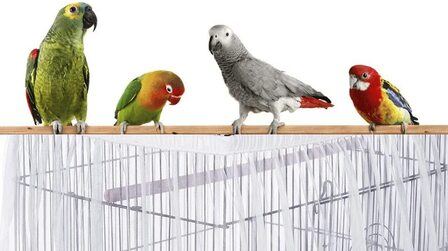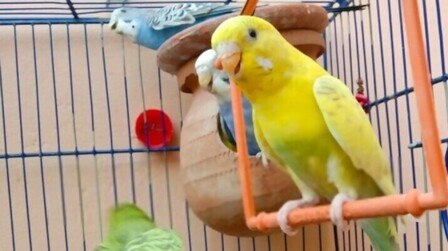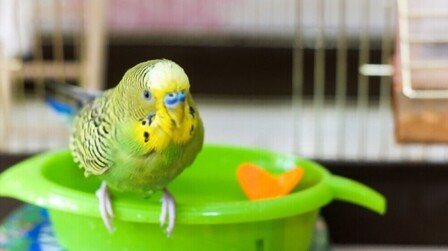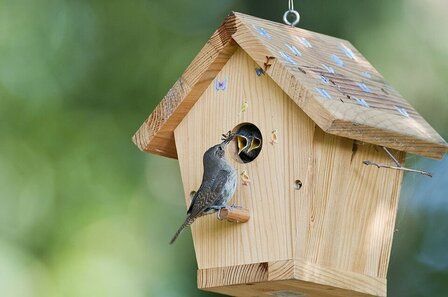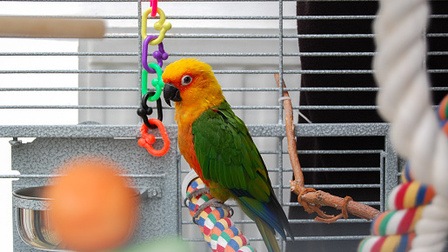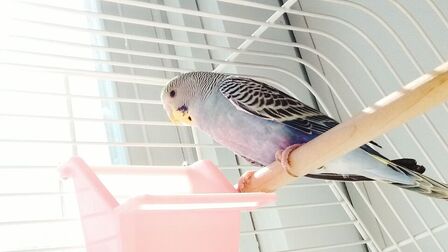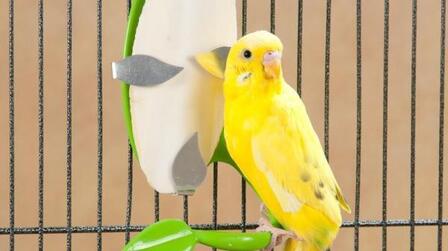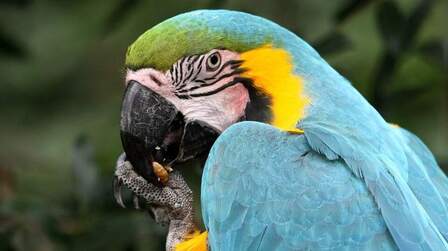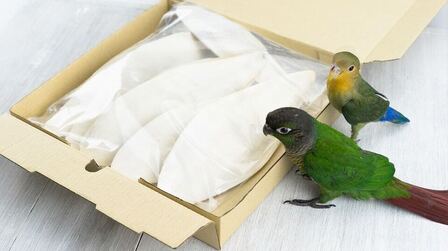One of the basics of bird ownership is providing the pet with adequate living space. A birdcage is a great choice.
With a wide range of birdcage sizes, colors, and designs available today, a great home for your pet is perfect.
While there are countless options when it comes to the types of bird cages available, here are some simple guidelines you can remember that will make the process of choosing one easier.
1. Cage size
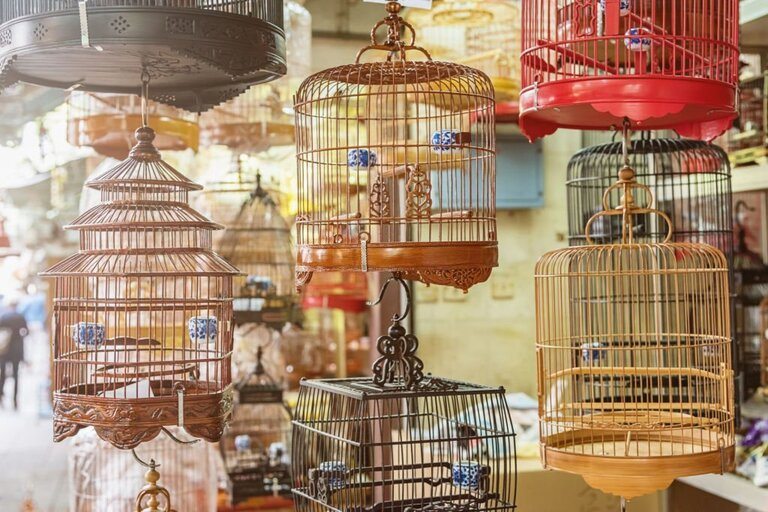
The bigger the criterion, the better. Why?
With us will look to nature to enjoy the vastness, beauty, and sense of freedom it imparts. And so are our pets.
The cage is the bird's primary environment and it is important that they can move freely, flap their wings, climb, play, acrobatic, forage, and perch on many levels within that environment. When you keep your bird in a cage that doesn't allow activities, it is detrimental to physical and mental health and can lead to stereotyped behaviors such as screaming, plucking, and aggression.
To answer the question above, you should purchase the largest cage possible from both a spatial and financial perspective.
2. Style of a birdcage

You should choose cages that are functional and safe. There are many choices when it comes to nesting styles.
Cage shape
Cages come in many rectangular to round shapes. While round cages can be attractive, they cut down on the living space available to birds.
Here, size is the deciding factor. Be sure to choose a cage with the most space horizontally and vertically. Small birds such as sparrows and warblers need a large horizontal cage to be able to fly from side to side.
Large parrots like Macaws and Cockatoos need a large upright cage for them to climb up to, but it also needs to be wide enough to flap their wings.
Dome and Play Top or Flat Top

Dome Top Cages: provide extra space for birds to climb and play. Furthermore, they allow for easy placement of toys and perching in the cage.
Play Top Cages: this is the integration at the top of the cage, providing an alternative space for the bird to hang out under supervision.
Flat Top: these cages allow for play gyms or supplies to be placed up top for birds, and even allow for stacking of other cages. While you can find double and triple-stacked cages too.
Whatever top you ultimately go with, it is also important that your bird has some sort of activity center outside of the cage and utilizes it daily.
Door size and style

- Does the cage door allow easy removal and cleaning of the bird?
- Does the door configuration allow entry into the cage while preventing the birds from escaping?
- Can the pet access the food bowl from outside the cage?
3. Bar Distance and Orientation

Usually the distance between the bars should be an important safety consideration when choosing a suitable cage. Because parrots can't get their heads in and get stuck in the gaps between the bars. In addition, the diameter and strength of each rod should be large enough to ensure that the rods are not bent or broken by your pet.
The combination of vertical and horizontal bars makes it easy for pets to climb and allows for more options when hanging toy accessories in the cage.
4. Safe construction

Overall, sturdiness and durability are key factors in ensuring birds will have a long and safe environment. Cages are made from many different types of materials, each of which has its advantages and disadvantages and the duration of use is not the same.
- Metal is the most durable and popular of the commonly used materials. Metal cages are usually powder-coated iron or stainless steel.
- Powder-coated cages are available in fashionable colors and at low prices.
- Stainless steel is the safest, most durable, non-toxic, and easiest to clean cage material to date. This is the best quality nesting investment you can make.
- Acrylic cages allow for enhanced bird visibility but they are not as durable as metal rod cages and limit the chances of climbing.
- Wooden cages are most commonly used for small, non-destructive birds such as sparrows and canaries. Wooden cages are difficult to clean and are sturdy, so are not recommended for warblers.
New cages should be thoroughly inspected to ensure that they do not present any danger to the birds:
- Check all the connections, sides and fasteners.
- Consider loose parts or accessible parts that a mechanically inclined bird can disassemble?
- Do the seams even fit?
- Are the welds rust-free and smooth?
- Are the rods and welds sturdy enough for your bird?
- Does a powder coat come off?
- Is the top of the cage securely attached to the frame?
- Are the locks and/or latches sufficient to hold your birds and prevent escape?
- Is the place where the birds perch securely together?
- Can the birds escape when the tray is removed?
5. Ease of maintenance

Stainless steel cages are easy to clean and they will never crack or rust.
The tray should be easy to remove and clean. The litter tray should be far enough below the net to prevent birds from reaching down to pick up food that could fall and thereby spoil or become contaminated with feces.
The Seed Guards section helps reduce the mess created on the floor by throwing food, empty seed pods, molted feathers, and chewing toys by repelling these throws back to the bottom of the cage.
The cage top for large birds should be easily removed for cleaning but should also have a locking feature to prevent them from being ejected by an escape artist.
At the same time, treats for large birds must be obtained from outside the cage.
Furthermore, many cages now incorporate this important feature. Stainless steel or porcelain bowls are easy to clean and disinfect.
Storage space is often incorporated into the cage in the form of a base cabinet or shelf underneath the cage. This provides a great place to store food, toys, newspapers, cage covers, and cage cleaning items.
Clean the dishes

Food and drink dishes should be washed daily with hot water and dish soap. Once the bowl is clean, dry it completely with a clean towel.
Choose some dishwasher safe dishes and use animal-safe detergents.
Animal-safe dish soaps and detergents are available at local pet stores, online, or in grocery stores that sell eco-friendly cleaning products.
Or you can have two or three sets of dishes on hand if you don't have time to properly clean and dry the dishes daily.
Check the cage accessories

If you invest in a birdbath, swing, ladder, or other toy, wash with hot soapy water the same way you would wash dishes.
Scrape off peafowl droppings and rotate the perches to ensure they are evenly worn.
If changing toys in the cage, consider moving around to give the bird variety and extra stimulation.
Change the lining

Bird cage lining should be changed daily. Newspaper or other store-bought liners are preferred liners for bird cages, as they are safe, economical, and easy to inspect for droppings.
Remove the old liner, use a damp rag or sponge to remove all the adhesive, and lay the new paper down in thin layers.
Newspaper liners or other recycled paper liners should be free of colored inks, as the pigments used in some inks can be toxic to birds.
Sweep the surrounding areas

You can use a hand broom or vacuum cleaner to sweep the areas around the cage to pick up food, feathers, feces, and other debris that may have fallen out of the cage. Wipe away any water or moisture that may have spilled onto the surrounding area.
The cage apron is used to help collect debris that falls out of the cage and is easy to clean every day.
If the coop is in a carpeted area, a plastic floor mat such as a pad or pad can be placed under the office chair to help catch debris and be easy to clean.
Arrange a cleaning schedule

Cage cleaning depends on a number of factors including cage size, number of birds, and how long the birds are in the cage each day.
Small cages with individual birds may need to be cleaned once a month.
Large cages for large birds or cages for many birds should be cleaned weekly.
Remove everything

Move the bird into a safe area such as a replacement cage and remove all toys and accessories from the cage for washing as usual. Remove the old liner and leave the cage empty.
Always keep the bird in an area that is not exposed to smoke or excess product while the cage is cleaned.
In particular, wash any dishes and cage accessories in hot, soapy water before returning them to a clean cage.
Scrape off debris and feces

Be sure to remove debris and feces from the cage using pet-friendly soap or laundry detergent and scouring pads. Scrape off any cage surfaces, as well as on peas and toys.
Sandpaper is useful in removing stubborn debris from wooden poles or toys.
Cage washing

Use hot soapy water to thoroughly wash the cage, rinsing thoroughly to remove all soap and residue.
An animal-safe soap or detergent is sufficient for this stage in the cleaning process.
Use a clean towel to gently dry the cage and absorb excess water from around the cage surface.
Cage sterilization
Once the cage has been cleaned, spray the cage disinfectant from top to bottom. Always rinse the cage thoroughly with water and allow it to air dry completely before returning the bird.
In addition, some people choose to use a vinegar cleaning solution that consists of one part distilled white vinegar and two parts water.
Another homemade recipe is 3 cups of hot water, 3 tablespoons of baking soda, and 3 tablespoons of lemon juice.
Or wipe all surfaces thoroughly with a clean cloth soaked in a disinfectant solution. Remember to use protective gloves whenever handling disinfectants.
Conclusion
Investing in a decent birdcage will provide birds and owners with many years of use and joy. You should remember that birds spend most of their lives in cages, and like us, need a safe, cozy, and relaxing home.
Therefore, help the birds choose a sweet home that will fulfill all their needs.


